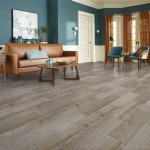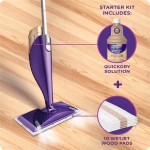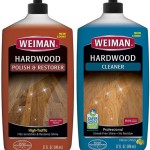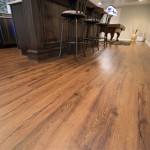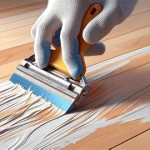Best Wood Floor For Bathroom
Wood flooring, renowned for its warmth and beauty, can be a desirable addition to any room, including the bathroom. However, the bathroom's inherent moisture presents a unique challenge for wood flooring. Careful consideration of wood species, construction, and finish is crucial for a successful installation. Choosing the right type of wood flooring can bring the desired aesthetic while mitigating the risks associated with a humid environment.
Engineered Wood Flooring: A Bathroom-Friendly Choice
Engineered wood flooring is often considered the best option for bathrooms. Unlike solid hardwood, engineered wood is constructed with multiple layers of wood veneer, bonded together with a cross-ply construction. This method provides superior dimensional stability, meaning it is less likely to warp, cup, or expand due to moisture fluctuations. The top layer features the desired wood species, offering the authentic look and feel of solid hardwood, while the layered construction underneath provides enhanced resistance to moisture damage. This construction method allows for greater stability in humid conditions than solid hardwood, making engineered wood a practical choice for bathrooms.
Species Selection: Prioritizing Water Resistance
While engineered construction enhances moisture resistance, the wood species itself plays a vital role in overall performance. Certain wood species naturally possess higher density and tighter grains, making them less susceptible to water damage. Teak, known for its natural oils and durability, is an excellent choice for bathroom flooring. Ipe, another dense and naturally water-resistant hardwood, also performs admirably in moist environments. Other suitable species include Cumaru and Jatoba, both known for their strength and resistance to decay. Selecting a species with a proven track record in wet environments is paramount to the longevity of the floor.
Surface Finish: Enhancing Protection
The surface finish acts as the first line of defense against water penetration. A durable, waterproof finish is essential for bathroom wood flooring. Several options offer strong protection. Urethane-based finishes, particularly those formulated with aluminum oxide, provide excellent scratch and water resistance. Moisture-cured urethane offers the highest level of water protection, making it a popular choice for high-moisture areas. Oil-based finishes, while requiring more frequent maintenance, penetrate the wood, providing a natural look and offering good water resistance when properly maintained. Careful selection of the surface finish is crucial to safeguarding the wood floor from the inevitable splashes and spills in a bathroom setting.
Installation Methods: Ensuring a Watertight Seal
Proper installation is critical for preventing water damage to bathroom wood flooring. A vapor barrier installed beneath the flooring can help to mitigate moisture migration from the subfloor. Using a waterproof adhesive designed specifically for wood flooring in wet areas is also essential. Ensuring a tight seal around the perimeter of the room and around fixtures like toilets and vanities is crucial to preventing water seepage. Meticulous attention to detail during installation can significantly extend the life of the wood floor in a bathroom environment.
Maintenance: Preserving the Beauty and Longevity
Even with the most resilient wood species and robust finishes, proper maintenance is essential for preserving bathroom wood flooring. Regular cleaning with a damp mop and a pH-neutral cleaner is recommended. Standing water should be wiped up immediately to prevent penetration. Avoid abrasive cleaners, as they can damage the finish. Periodically reapplying a sealant can help to maintain the water resistance of the finish and extend the life of the floor. Implementing a proactive maintenance routine is key to enjoying the beauty and functionality of wood flooring in the bathroom for years to come.
Ventilation: A Critical Factor
Proper ventilation plays a crucial role in maintaining a healthy bathroom environment and protecting wood flooring. Adequate ventilation helps to remove excess moisture from the air, reducing the risk of condensation and water damage. Running the exhaust fan during and after showers and baths is essential. Ensuring good airflow can significantly minimize the potential for moisture-related problems and contributes to the longevity of the wood floor. A well-ventilated bathroom is a crucial factor for the success of any wood flooring installation.

What Is The Best Flooring For Bathrooms Tarkett

10 Best Woods For Bathroom Floors To Choose In 2024 Floor Sanding
:max_bytes(150000):strip_icc()/traditional-bathroom-57feaca03df78cbc286997d1.jpg?strip=all)
15 Ideas For Wood Floors In Bathrooms

Bathroom Wood Flooring At Best In Gurgaon By The Interior Studio Id 10023169430

Bathroom Grey Oak Wood Flooring For Indoor Surface Finish Matte At Best In Mumbai

The Pros Cons Of Bathroom Flooring Options Carpet Court Nz
%20ST%203.jpg?strip=all)
The Best Bathroom Floors Flooring America

Best Bathroom Flooring Options

Bathroom Floor Tile Ideas To Brighten Up Your Home For Spring And Summer Crown Tiles

The Best Waterproof Flooring That Isn T Tile

